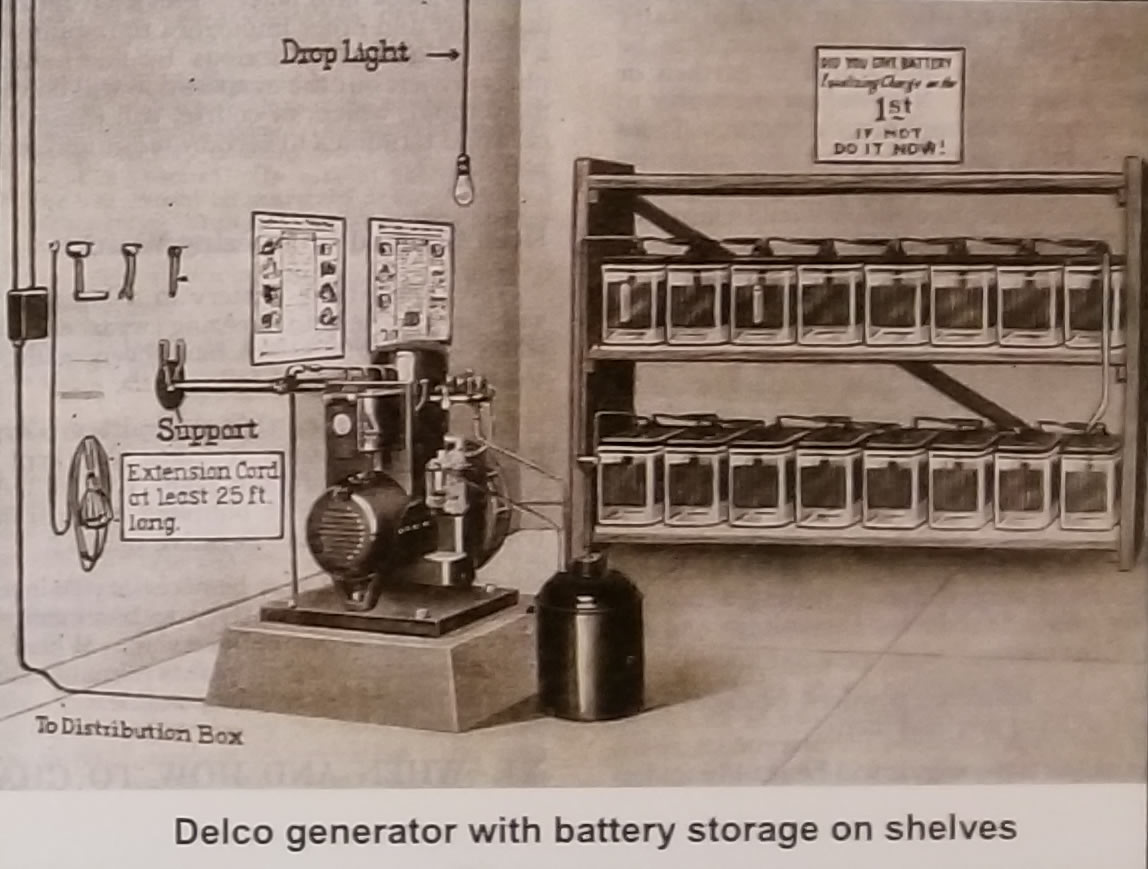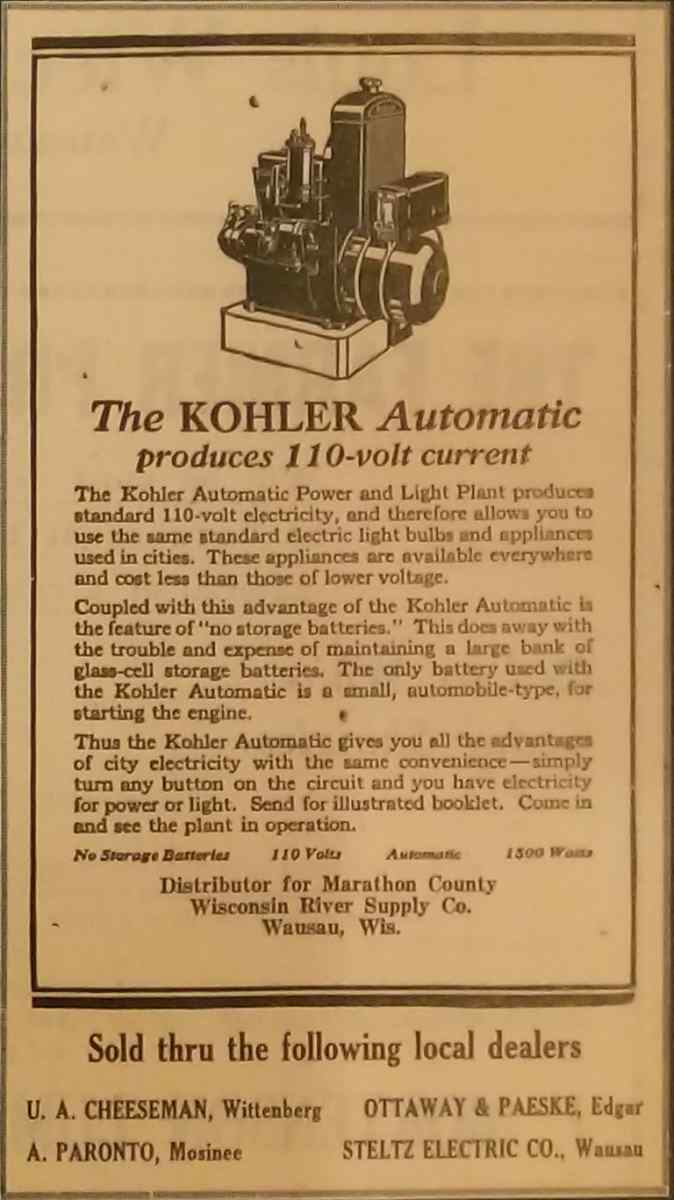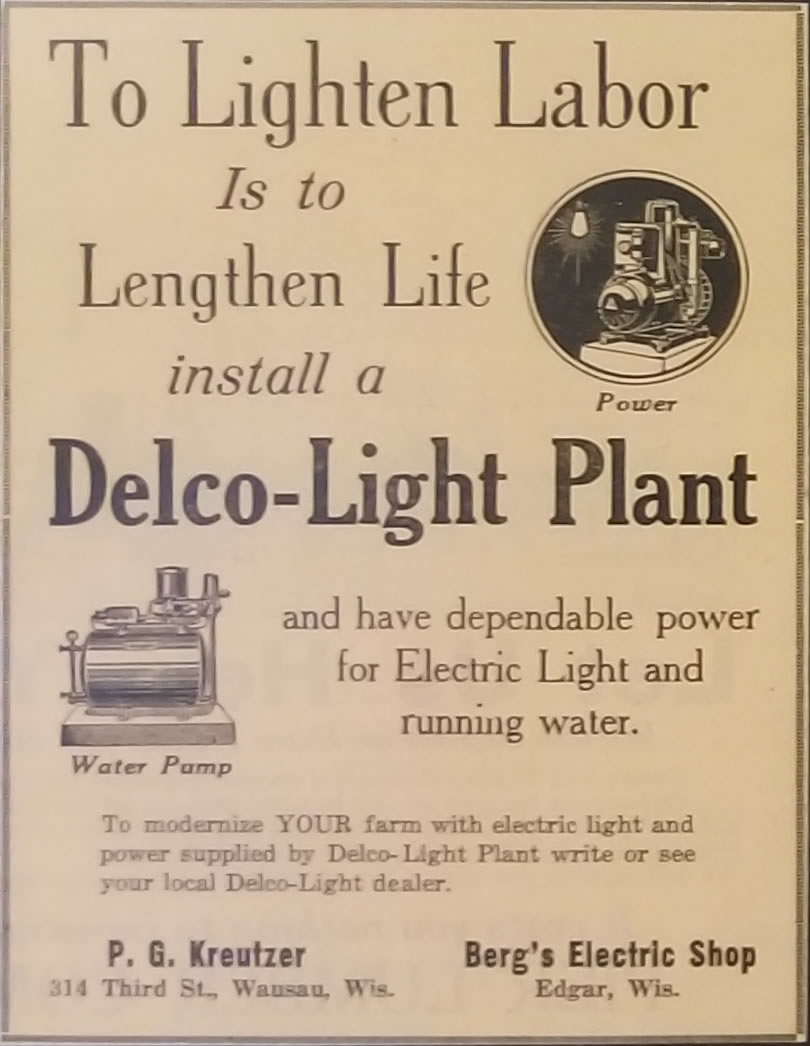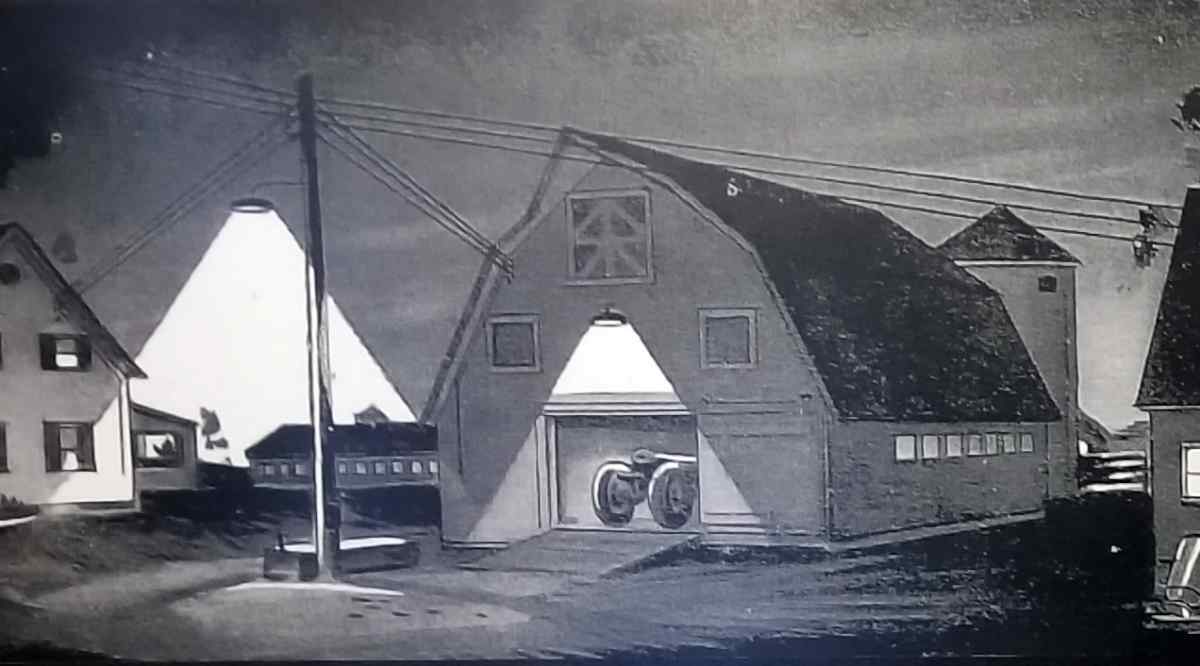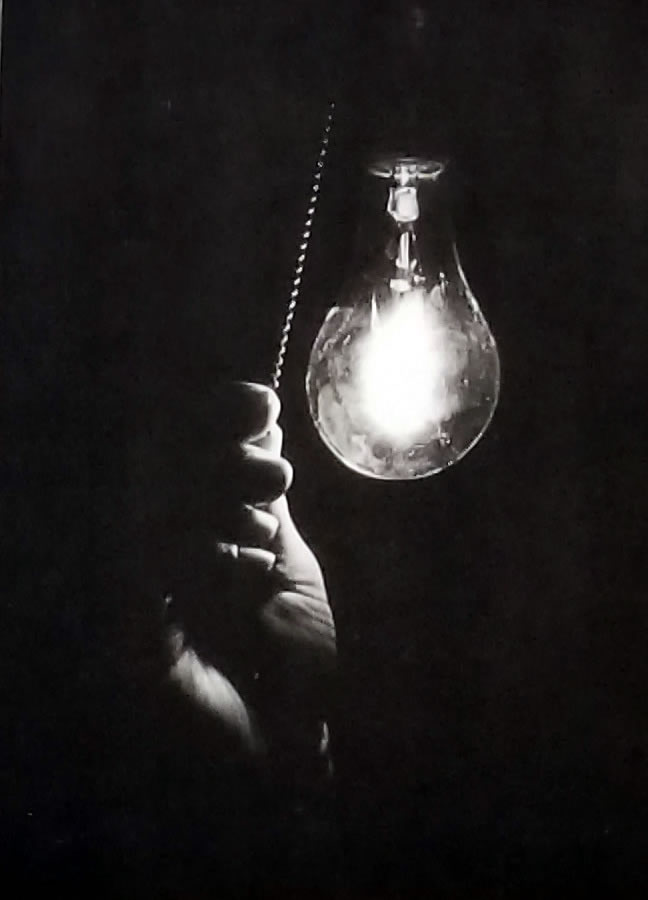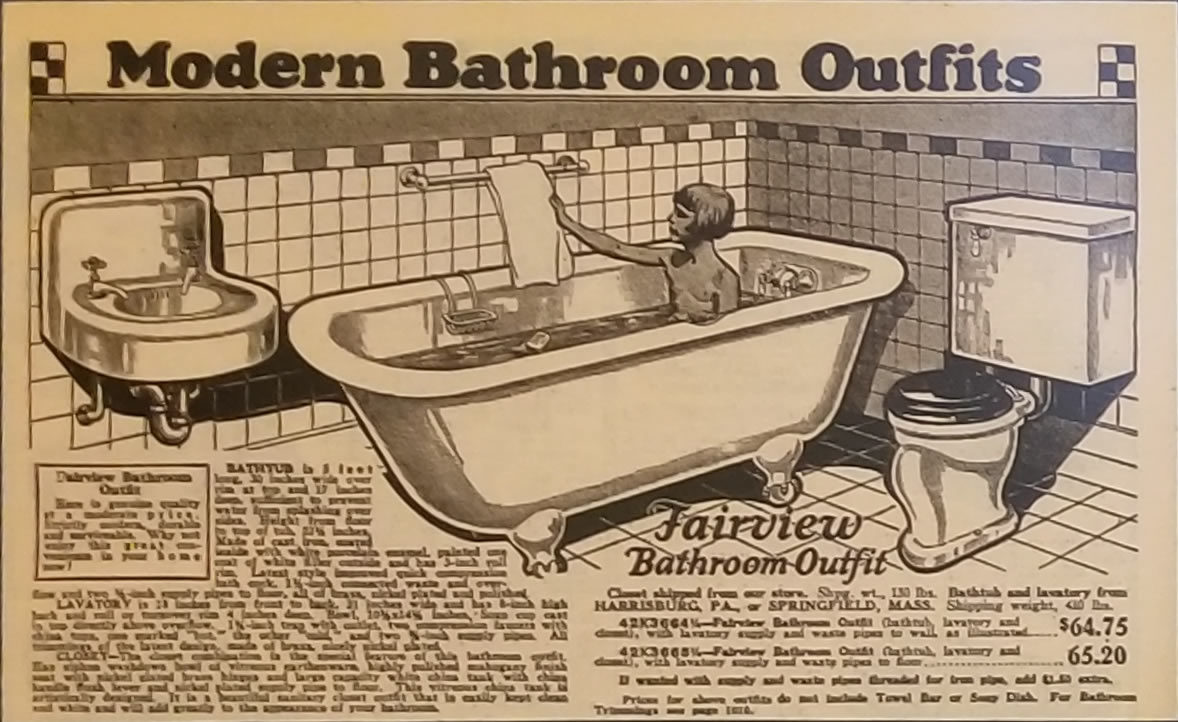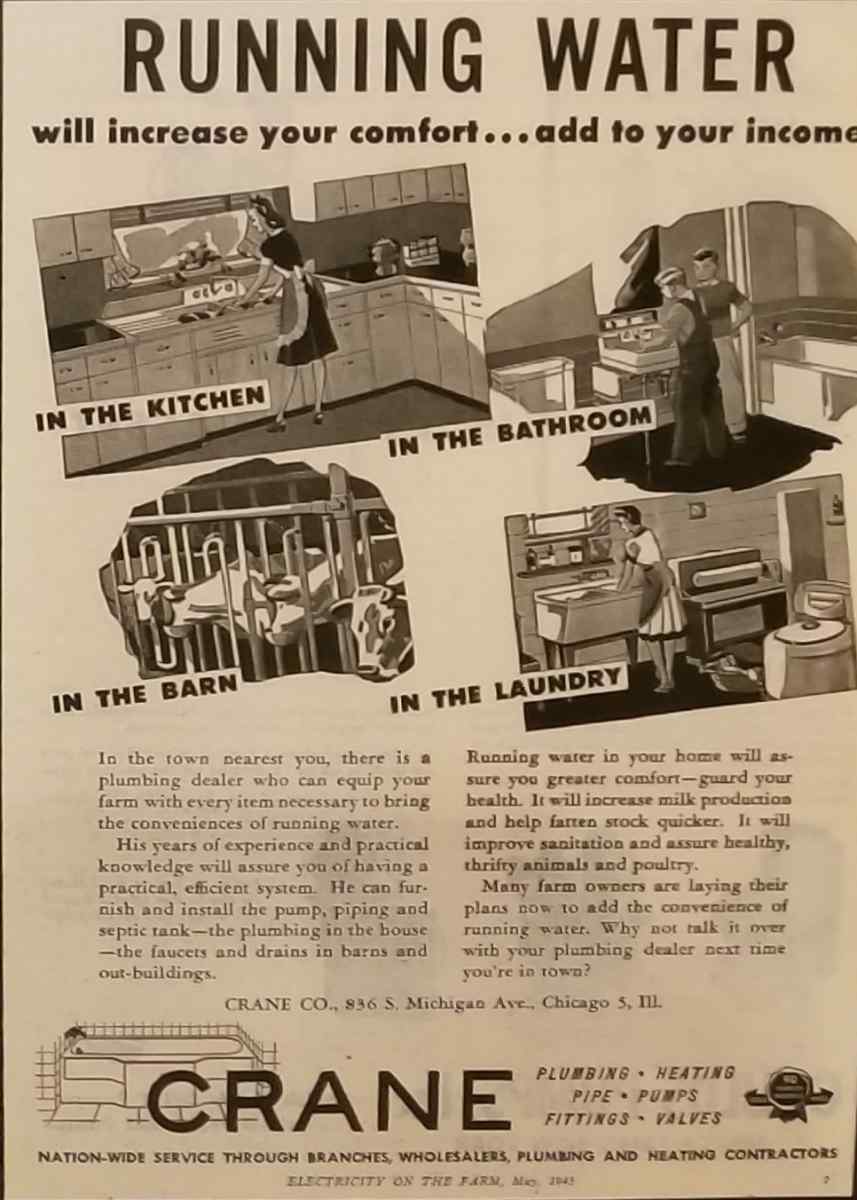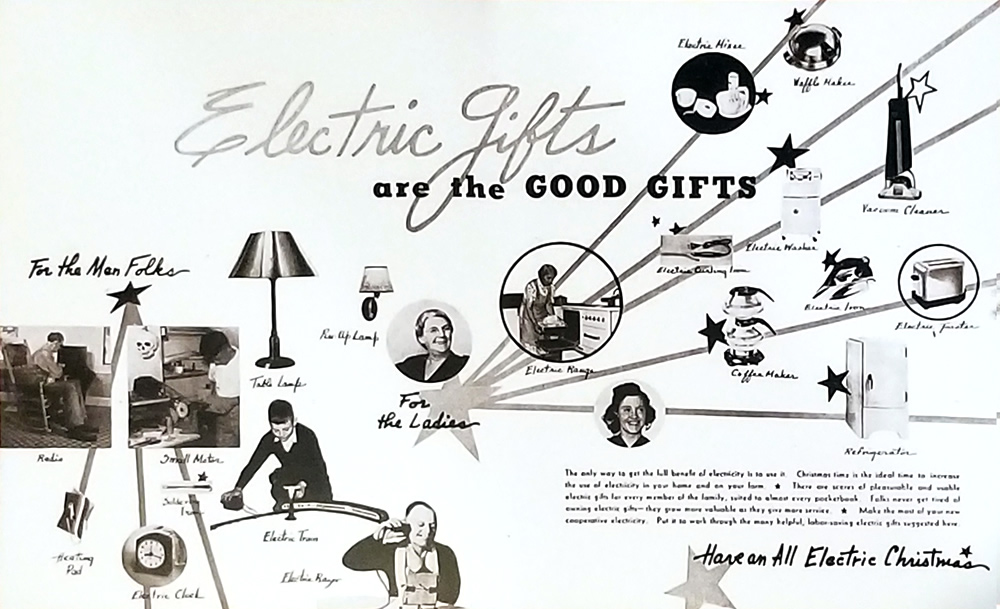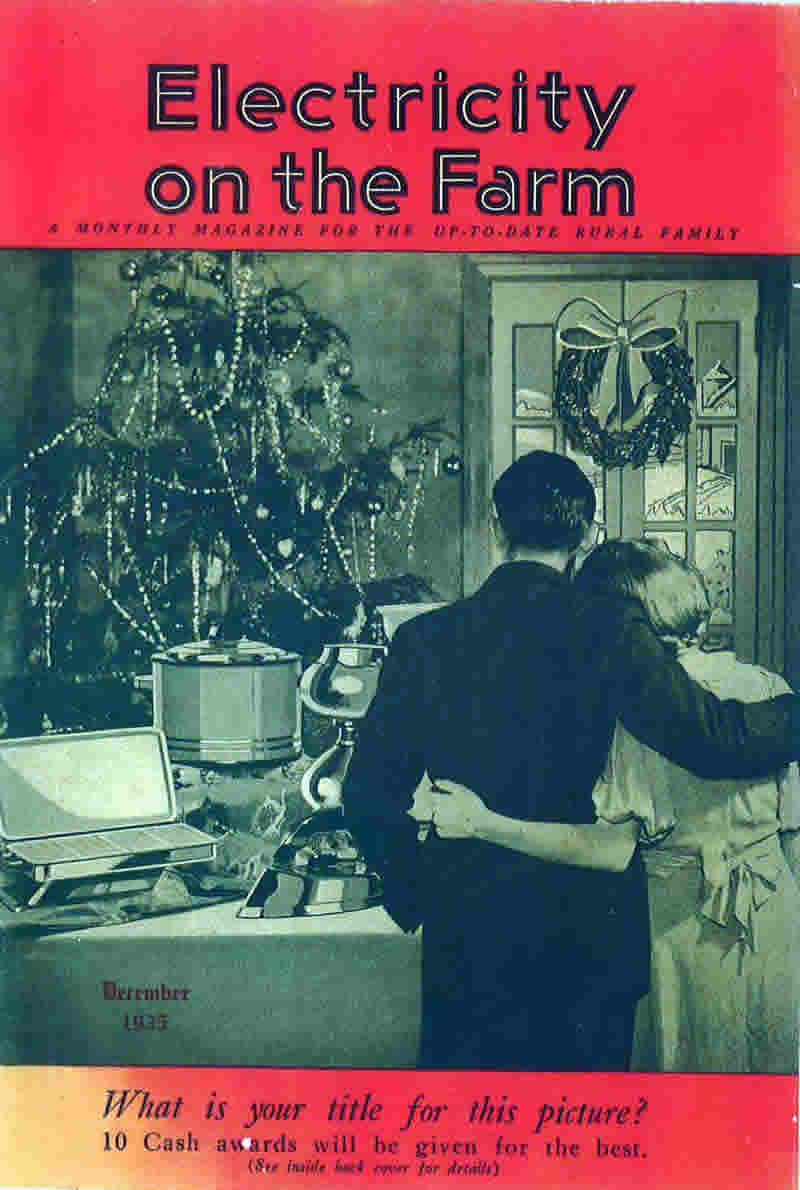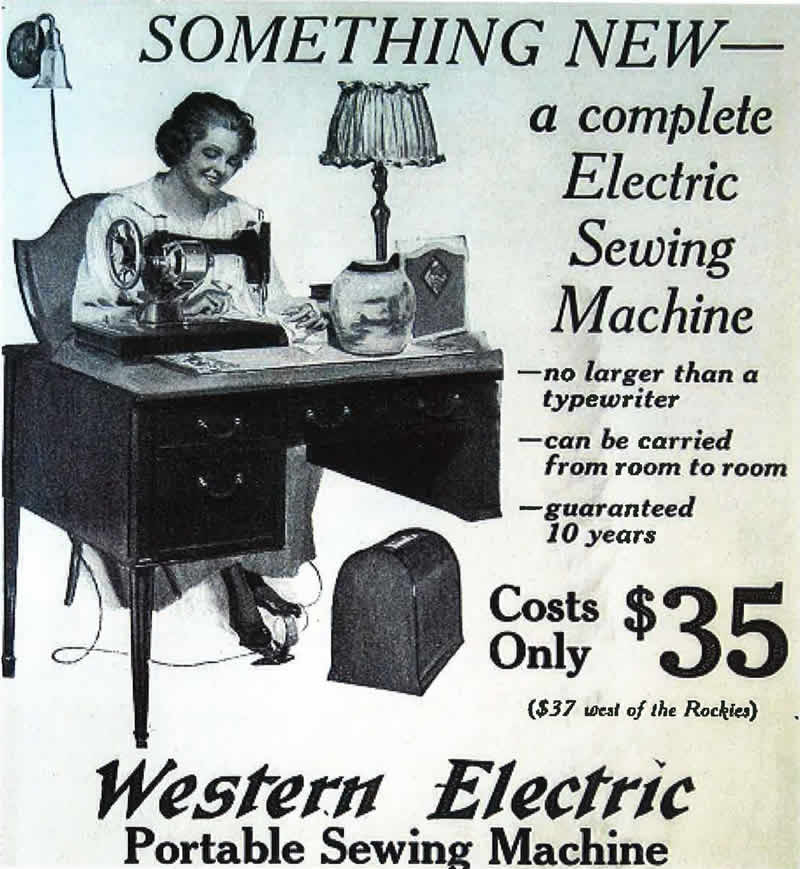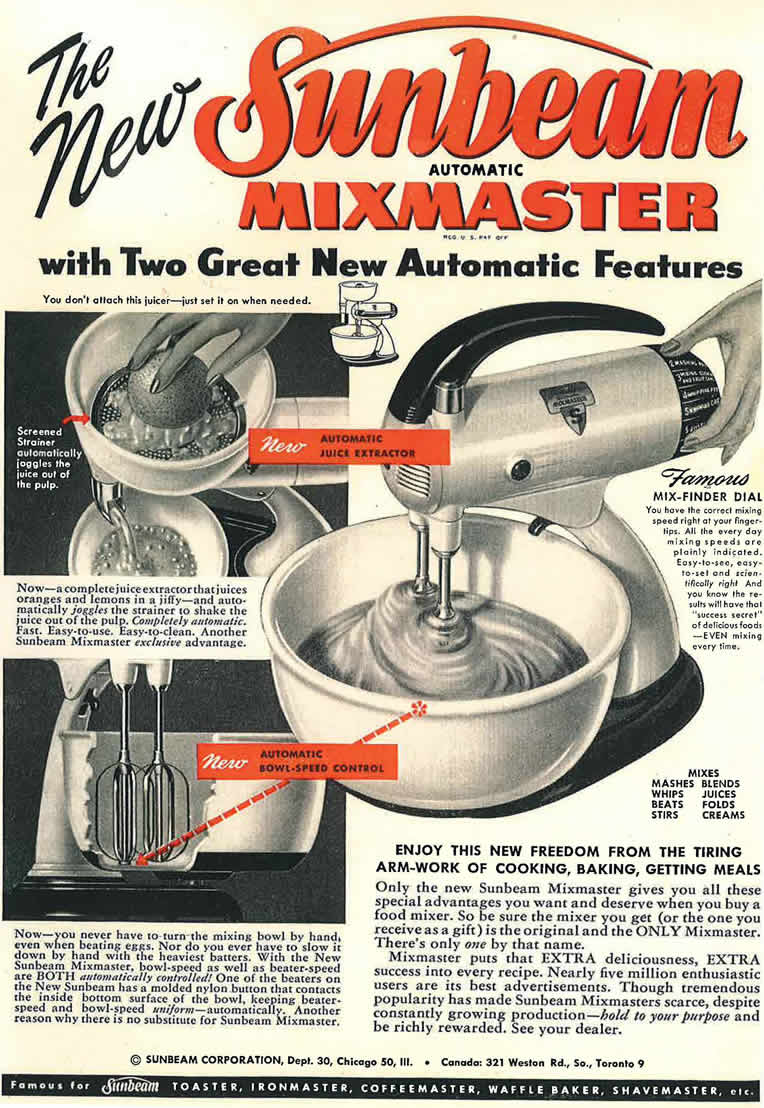Rural Living With Electricity
Rural Living With Electricity
Click Images To Enlarge
Light Plants on the Farm
Before electricity came to rural areas via power lines, some farmers purchased devices to provide electricity for their homes and barns. Wind powered generators were one answer. A more common solution was a gasoline-powered electric generator. Delco and Kohler Light Plants were two of the most popular generators.
The light plants did not generally provide as much power as a hookup to an electric line could, but they were far better than no electricity at all. A typical Delco Light Plant put out 750 watts at full load which could light fifteen 50-watt light bulbs or fewer bulbs plus a few appliances. The Delco ran a few hours each day and stored electricity in a row of batteries for use as needed. The Kohler Automatic Electric Plant ads proclaimed that their system did not require the storage batteries, could generate 110-volt current to operate light bulbs and appliances, and would turn on and off automatically as the electric switch of an appliance was turned on or off.
“Our farm had those battery packs in the barn run with an engine, before electricity. It was a light plant, a gasoline engine of some sort. They pumped water with that light plant too.”
Mary Hamann Schultz
“My dad told me that he tried the small wind generator that would go up on the peak of the building and there was something about the wind currents in the area where we lived that the wind would blow from one direction just long enough to get the generator about to kick in and then it would swirl and the generator would just twirl on its base and then stop. The wind generator just never worked.”
Brian Bushnell
“We were the first people in the neighborhood with electricity, running water, electrical lights and a hot water heat furnace. My mother was the first one in the area that had an electric washing machine. Our source of power was from a line of batteries in the basement which was charged by a gasoline engine. If the light started to dim we knew it was time to start the engine. In the late 20s or early 30s the power line came through our area, so we were hooked up to that.”
Mae Fuller
“(In the early 1940s) when I was a teenager they got something called a Delco plant and that was run with batteries and they had to run this motor in order to generate power for lights. So it was better than lamp light but not much better because you always had to run this motor and that was a loud noise.”
Delores Goetsch Rusch
“We had the Delco generator that was run by windmill. We had a little building (for the Delco) under the windmill and there was a set of batteries. The wires came out of there and went to the barn and to the house. It also pumped water so we always had fresh water for the cows.”
Ralph Zagrzebski
Electric Lights on the Farm
Lights were generally the first items acquired when a farm was electrified. Outlets came at the same time or shortly afterward. Having electric lights made a big difference in the house and in the barn. Cleaning messy kerosene lamps was no longer a weekly chore. Electric lights provided enough illumination for the family to read, sew, do school work and many other activities in the evening without eye strain. Electric appliances were expensive and often the farm family had to wait a few years to acquire them.
“We had one light in every room and we had at least one outlet in every wall.”
Lester Schneider, Jr.
“Apparently lighting was the first thing. The house was moved from several miles south of us and that area may have had electricity well before we did. It may have been wired before the house was moved.”
Brian Bushnell
“The dining room, where our big potbellied stove was, was the hub of our house. When that electric light came above the table my parents adored it because they read the paper faithfully. Then my dad could read the paper at night.”
Mary Hamann Schultz
“Oh, it was so bright and light. We had more light than we ever were used to. You turn a switch and there was light. It was really something.”
Ruth Hartwig Ollhoff, Town of Maine farm electrified in 1928
“It was just the lights first (no outlets). I believe that it was like one per room basically.”
Ralph Zagrzebski
Indoor Running Water and Plumbing
Indoor running water requires an electric pump. After a farm was electrified, water could be piped into the kitchen and the milk house. No more hand pumping and hauling water in buckets. Hot water required a hot water heater but even cold running water made life much easier.
One of the challenges of having an indoor bathroom was that such a room had not existed before in the house. A room had to be built on or repurposed to house a sink, tub and toilet. Many farm houses had electricity several years before they had a bathroom.
“We had a well and an electric pump in the basement. We had running water but only to the kitchen. The indoor bathroom didn’t go in until the summer of 1961. The only hot water was in the kitchen and in the basement for the old ringer washer with the tubs, that was electric.”
Brian Bushnell
“In 1947 we put our plumbing in. We had a porch on the front of the house that they made into a bathroom and extended our dining area. So that’s where our first bathroom was, the first toilet and tub and sink.”
Mae Lensmire Gliniecki
“I can remember even when we did get electricity we did have a bathroom in the house but us boys still had to go outside. The girls got to use the inside bathroom.”
Ralph Zagrzebski
Electric Appliances
Hooking up to the electric lines was a major expense for a farm family. Acquiring all of the desired electric appliances for home and farm could not be accomplished immediately. Appliances were added one by one, as money was available. Refrigerators, stoves and washing machines were expensive items. Electric radios and irons were more affordable and improved farm life considerably.
Stores that sold electric appliances, radios and other items were eager to sell their products to these new customers. Their advertisements could be found in every farm magazine and newspaper.
“Electrical appliances came so gradually. You’d get one here and then one there, usually for a Christmas present or Mother’s Day gift. When the Mix Master came out she had one of the first ones. We didn’t have that many electrical outlets. It was always a chore because there weren’t that many outlets in the house.”
Mae Lensmire Gliniecki
“We had a radio. We would go down to our neighbors and watch (black and white) television. They had a television right away. It (the screen) was snowy, but we had to go to our neighbors.”
Lester Schneider, Jr.
“It was just the lights first (no outlets). I believe that it was like one per room basically. I think (the first appliance) was the washing machine because at that time there were seven of us kids plus my parents so there was a lot of clothes. And that saved a lot of time for my mother besides making meals for all these people. The refrigerator came fairly quickly and a freezer came quickly too. I can remember them talking about how they can butcher a cow or a hog or something and be able to keep it for all winter.”
Ralph Zagrzebski
“I didn’t get my (clothes) dryer until my fifth child was a year old. Before that it was, is the weather going to clear up so I can get some diapers washed and dried? In the winter, it was hanging (clothes) down in the basement on the line. The dryer freed me from all that. I’d fight for that before any of the other of my appliances.”
Esther Reinhart
“We had no electricity until 1936. The high line came through in 1927 but we didn't have it hooked up until 1936. We didn't get appliances right away because we couldn't afford it. But later on we did get a refrigerator.”
Melvin Klinger
“We had a refrigerator then in the new house. It would have been 1945. That was really nice to have ice cubes.
I can remember the old boiler on the stove. My mother washing clothes with the old rubbing board. Then came the gas engine and oh my that was like a miracle sent from heaven, to wash your clothes in the old Maytag with that old gas motor plunking away. And then came electricity. We converted it to electricity.”Lois Nass Jorgensen
“I can remember the prize fights – Joe Louis. And whenever there would be a game, all the neighbor men would come over to our house ‘cause we’d have the only radio. The guys would all straddle their chairs and sit in a circle around the radio. This was big time, boy, listening to the prize fights.”
Mae Lensmire Gliniecki
“It was a wonderful feeling because my mom could have a refrigerator and you know there's a lot of things. Like a curling iron to curl her hair. She could have all of these things that other people had, you know? An iron, an electric iron. All these things were taken for granted.”
Delores Goetsch Rusch

